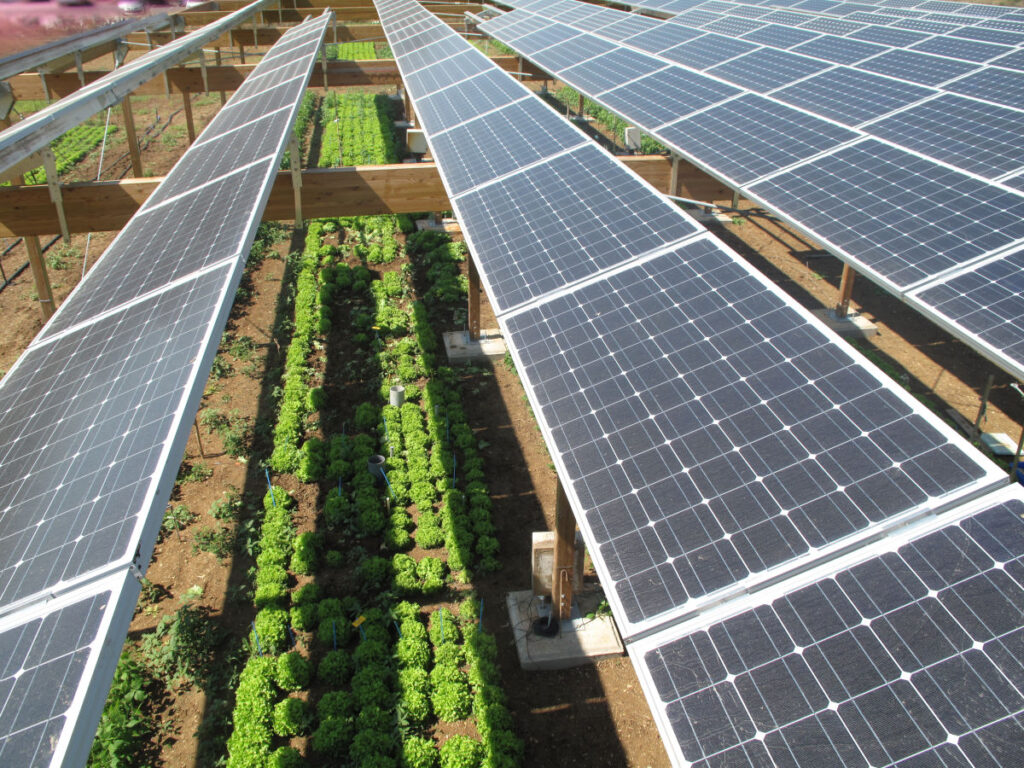[LUM#19] In the shade of solar panels
Combining food production and energy production is the challenge taken up by agrivoltaics. A concept born in Montpellier that has since spread throughout the world: installing solar panels on agricultural plots. Christian Dupraz, a researcher at the Absys laboratory, explains. Absys laboratory, who came up with the idea.

100 gigawatts of photovoltaic energy by 2050 is the target announced by the President of the Republic in February 2023. "It's a difficult challenge: south-facing roofs, parking lots, and brownfield sites will not be enough to meet this very ambitious but necessary target, " says Christian Dupraz. For the agroforestry researcher, the solution can be summed up in one word: agrivoltaics.
Agrivoltaics is the practice of combining photovoltaic panels and agricultural crops on the same plots of land. "The concept was born in Montpellier in 2009 with the world's first prototype installed in Lavalette," recalls Christian Dupraz, who initiated the project. "When we assess the light exposure of an agricultural plot, we see that crops only use a third of the solar radiation. The remaining two-thirds that are not used for agricultural production can be used to generate photovoltaic energy, so the process makes better use of the sun, " explains the crop modeler.
Mobile panels
And to ensure that crops get their share of sunlight, there are two options: either install panels with reduced density on the plot, "or use mobile panels that can be moved aside to let light through to the crops when they need it, " explains the researcher from the Absys laboratory. A well-designed agrivoltaic power plant can therefore maintain agricultural yields and sometimes even improve production by protecting crops from extreme weather conditions.
"The panels protect the soil and crops from excessive sunlight, reducing their water requirements by 20% to 30% and representing significant savings in irrigation. They also limit the risk of burning crops in the event of a heatwave, while protecting them from hail and mitigating the effects of frost," explains the researcher, who points out that crops of all kinds can be protected by the panels: vegetables, fruit trees, cereals, etc. "But also for vines, which in recent years have suffered from excessive sunshine, making the grapes too sweet and degrading the quality of the wine. Several winegrowers have installed agrivoltaic power plants and are very satisfied with them."
Cheaper electricity
The electricity produced can either be sold back to the grid or used for self-consumption. "This technology is attracting growing interest, especially since photovoltaics has recently become the cheapest form of electricity," says Christian Dupraz. We have calculated that by equipping less than 2% of France's cultivated land with new-generation agrivoltaic systems, we could produce the equivalent of all our current nuclear power generation without any reduction in agricultural production." With a new agrivoltaic power plant opening every two months in France, the idea is gaining ground.
Find UM podcasts now available on your favorite platform (Spotify, Deezer, Apple Podcasts, Amazon Music, etc.).